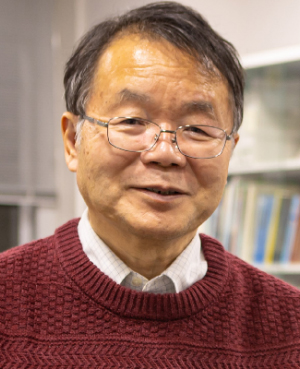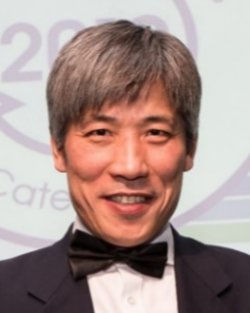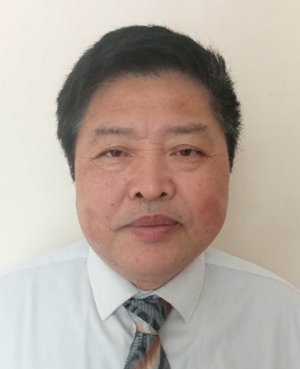
Ib Chorkendorff
Technical University of Denmark,Denmark
Bio
Ib Chorkendorff is Professor in Heterogeneous Catalysis at DTU-Physics. He earned his PhD in 1985 Odense University Denmark, and after a post-doc at University of Pittsburgh, USA, he was employed in 1987 at DTU where he became full professor in 1999. From 2005-2016 he was director of Danish National Research Foundation Center for Individual Nanoparticle Functionality (CINF) and from 2016 he has been director of The Villum Center for the Science of Sustainable Fuels and Chemicals (V-SUSTAIN). He was elected Fellow of The Academy for Technical Sciences in 2001 and member of the Royal Danish Academy of Sciences and Letters in 2018. He has authored or coauthored more than 400 scientific papers, 23 patents and one textbook “Concepts of Modern Catalysis and Kinetics”. He has since 2017 been listed as a Highly Cited Researcher (ISI) (top 1% in the field). Ib Chorkendorff’s research activities focus on finding new catalysts for improving sustainable energy production/conversion and for environmental protection. He is co-founder of three start-up companies RENCAT APS, HPNOW APS and Spectroinlets APS and has received numerous awards, latest the Villum Kann Rassmussen Annual Award (2021), which is the most prestigious award in Denmark and in 2022 The Eni Award: Energy Frontiers Prize.
Title
New Routes of Ammonia Synthesis and Decomposition
Abstract
Activating molecular nitrogen is an extremely important process as it supplies, in the form of fertilizer, the nitrogen that is a prerequisite for building all amino acids and nucleic acids essential for life. Ammonia is also considered being an energy vector for storing energy over longer time. It shall be motivated why an alternative route to the current thermal ammonia synthesis route – the commercial Haber-Bosch process - could be attractive in a decentralized electrified society. This will be extended to new routes of promotion of thermal ammonia synthesis (and decomposition) showing how cobalt can also be made very active.1 The active site will be identified by a combination of cobalt single crystals with and without steps combined with reaction over mass-selected nanoparticles made in situ by a cluster source2. We shall also discuss the briefly the cracking of ammonia for making it useable for the shipping industry3. In the second part, we shall turn to electrochemical ammonia synthesis where we now have shown how one can make ammonia at ambient conditions. The Li-mediated process will be discussed, and we will show how we over the last 5 years have gone from having a process that did only make very little ammonia3 to now being capable of obtaining more than 80% Faradaic efficiency and high current densities.4,5 The scale-up approach will be discussed making grams of ammonia just as characterization of in situ measurements of the dynamic assembly of the solid electrolyte interface (SEI) layer - known from the Li batteries field - is formed, controlling the transport processes.6 Despite excellent recent progress there are still substantial outstanding questions concerning energy efficiency which will also be discussed7,8.
References
- Cao, V.,. I. Chorkendorff, J. K. Nørskov, Nature Comm. 13 (2022) 2382. DOI:10.1038/s41467-022-30034-y.
- K. Zhang, ….J. K. Nørskov, I. Chorkendorff, , Science (2024) DOI: 10.1126/science.adn0558.
- Gunnarson,…..I. Chorkendorff, Submitted (2024).
- S. Z. Andersen,… J. K. Nørskov I. Chorkendorff, Nature, 570 (2019) DOI: 10.1038/s41586-019-1260-x
- X. Fu, ... J. K. Nørskov, and I. Chorkendorff, Science 379 (2023) 707-712. DOI: 10.1126/science.adf4403
- S. Li, …. J. K. Nørskov, and I. Chorkendorff, Nature (2024). DOI:10.1038/s41586-024-07276-5
- N. H. Deissler,‚.. I. Chorkendorff Energy & Environmental Science (2024) DOI: 10.1039/D3EE04235A
- S. Li, X. Fu, J. K. Nørskov, I. Chorkendorff, Accepted Nature Energy (2024).

Hideo Hosono
Tokyo Institute of Technology, Japan
Bio
Hideo Hosono is an honorary and institute professor of Tokyo Institute of Technology and a distinguished fellow and a group leader at National Institute for Materials Science. He received a Ph.D. in Applied Chemistry from Tokyo Metropolitan University in 1982, and became a professor of Tokyo Tech in 1999 via Nagoya Tech, Institute for Molecular Science and Vanderbilt University. He studied point defects in SiO2 glass and worked on creation of photosensitive glasses utilizing point defects, photonic glasses by ion implantation, protonic conductive glasses and micro-porous glass-ceramics with phosphate skeleton. After these researches, he shifted the main subject to cultivation of electro-active functionality in transparent oxides in 1993. His research focus is creation of novel functional materials. The representative achievements so far are material design of transparent oxide semiconductors such as IGZO and their TFT applications for a state-of the art displays such as OLED-TVs, creation of stable electrides and their application to catalysts for ammonia synthesis, and discovery of high-Tc iron-based superconductors which led to the 2nd research fever since high-Tc cuprates. His current interest is “quantum materials and catalysis”. Hosono is a recipient of various honors including the Japan Prize, von Hippel Prize (MRS), J. McGroddy Prize (APS), Karl Ferdinand Braun Prize (SID), Eduard Rhein Award (Germany), Imperial Prize (the Japan Academy), and is a Thomson Reuter Citation Laureate and a foreign fellow of the Royal Society.
Title
Progress in catalysts for green NH3 synthesis: What we learned from the past decade
Abstract
Research on catalysts for NH3 synthesis at mild conditions has been much accelerated in that last decade as evidenced by rapidly increasing publication number of the papers. In this talk I summarize the features of the various activation methods reported so far, looking chronologically back at progress in heterogeneous catalysts since the use of iron oxide for the Haber–Bosch process, and finally the current technical challenges to be overcome are presented.

Hideaki Kobayashi
Tohoku University, Japan
Bio
Hideaki Kobayashi is a Research Professor at Tohoku University, Japan. He has been involved in research on fundamental processes of combustion phenomena in extreme environments, such as high-pressure turbulent premixed combustion, supersonic combustion, microgravity combustion and low-oxygen, high-temperature air combustion. He served as the team leader of the ammonia direct combustion research in the national project SIP “Energy Carriers”, which ran for five years from 2014. He is presently involved in projects on basic ammonia combustion, development of ammonia gas turbines and industrial furnaces using ammonia. He completed his master degree at Tohoku University in 1983 and became an associate professor at the university in 1992 after obtaining PhD in 1991. He became a professor at Institute of Fluid Science, Tohoku University in 2003. He served as President of Combustion Society of Japan from 2015 to 2017 and Vice-President of The Combustion Institute from 2016 to 2020. He received The Commendation for Science and Technology by The Minister of Education, Culture, Sports, Science in 2017 and Technology. In 2018 he was honored as a Fellow of The Combustion Institute and in 2022 he was awarded The Bernard Lewis Gold Medal.
Title
Ammonia direct combustion – General features and applications
Abstract
Ammonia, along with hydrogen, is a promising carbon neutral fuel for the energy and industrial sectors. Research and technology development in ammonia combustion for use as a fuel has intensified in the last decade. Ammonia and hydrogen can be regarded as family fuels in terms of no CO2 emission, but their characteristics of combustion are completely different. Hydrogen has very high reactivity and ignitability and NOx production is due to thermal NOx, whereas ammonia has very low reactivity and ignitability and NOx production is due to fuel NOx. Recent advances of combustion science in terms of combustion chemistry, numerical analysis as well as combustion diagnostics play an important role in meeting these challenges. New knowledge on ammonia combustion has led to various application studies, some of which are approaching social implementation. In particular, the co-firing of ammonia and pulverized coal in thermal power generation and the development of ammonia gas turbines are at this stage. Heat utilizations in various ammonia combustion furnaces for material and chemical industries are also nearing practical application. In this presentation, the progress of applied technology as well as research on ammonia combustion that supports ammonia combustion technology will be presented.

Christine Rousselle
Université d'Orléans, France
Bio
Christine Rousselle is professor at the University of Orléans (Laboratoire PRISME). Her main research fields are: fundamental combustion to applications, new combustion modes (lean burn, LTC, RCCI,…), low and zero carbon-fields (ammonia, alcohols, low-carbon fuels), described by using optical diagnostics, and with some focuses for engines. She has held positions at the International Energy Agency (IEA) as representative of France and as chair/co-chair of the IEA Clean and Efficient Combustion Technical collaborative program. She is a member of the Scientific Council of IFP-EN. She is a Fellow of the Combustion Institute (2021), Associate Editor of the proceedings of the Combustion Institute and the Journal of Ammonia Energy. She was chair of 2nd Symposium on Ammonia Energy, held at University of Orléans in July 2023. She is ambassador of ASME-ICE. She also has chaired the mini-symposium about ammonia spray in the International Conference of Numerical Combustion (Kyoto, Mai 2024). She is also visiting professor at IFS-Tohoku University.
Title
Net ammonia engine: an utopia or still a challenge?
Abstract
The objective to reach neutral carbon footprint in 2050 accelerates the energy transition. Industries and scientists collaborate for developing zero CO2 emission solutions for all energy sectors: power, transport, and industry. Thermal engines will remain one efficient and easy way to produce energy as a function of use and the location, for marine, train, plane, trucks, gensets or auxiliary power units. Hydrogen and hydrogen derived fuels, ‘e-fuels’ will play an important role to decarbonize fully them. Ammonia, one of the simplest electro fuels, is a promising candidate as energy and hydrogen carrier, but it can also be used directly as a zero-carbon fuel. The combustion properties of ammonia are far from those of conventional fuels and remain not well known at high temperature and pressure engine relevant conditions. During this talk, the state of art of ammonia combustion in internal combustion engines will be presented with focus on the remaining challenges.

Junwang Tang
Tsinghua University, China
Bio
Prof. Junwang (John) Tang is a Member of the Academy of Europe, a Royal Society Leverhulme Trust Senior Research Fellow, Fellow of the European Academy of Sciences, Fellow of the Royal Society of Chemistry and Fellow of IMMM. He is the Founding Director of Industrial Catalysis Center in the Department of Chemical Engineering and Chair Professor of Materials Chemistry and Catalysis at Tsinghua University, China and a Visiting Professor at University College London, UK. Tang concentrates on Renewable Energy-to-Chemicals by coupling thermo-catalysis (phonons) with photo-catalysis (photons), involving small molecule activation to produce zero-carbon fuels (eg. H2O to H2, N2 to NH3) and valuable chemicals (CO2 to alcohols and CH4 to C2+ hydrocarbons) as well as microwave -catalysed plastic recycling, together with the investigation of the underlying charge dynamics and kinetics by state-of-the-art spectroscopies, resulting in >250 papers published in Nature Catalysis, Nature Energy, Nature Materials, Nature Reviews Materials, Nature Sustainability, Chemical Reviews, Chem. Soc. Rev., Materials Today, Nature Commu., JACS, Angew Chemie etc. with ~29,000 citations. Prof. Tang has received many awards, the latest of which is the 2022 IChemE Oil and Gas Global Awards, 2021 IChemE Andrew Medal, 2021 the RSC Corday-Morgan Prize and 2021 Royal Society-Leverhulme Trust Senior Research Fellowship etc. He also sits on the Editorial Board of 5 international journals, eg. the Editor of Applied Catalysis B and Associate Editor of Chin. Journal of Catalysis etc.
Title
Renewable energy-driven NH3 synthesis and its decomposition
Abstract
Renewable energy, in particualr solar-driven water splitting is scientifically and industrially of significance as it promises an efficient pathway for green H2 production, leading to substantial CO2 emission reduction. Herein green H2 storage and transportation are equally important to its production. Our early study on charge dynamics in inorganic semiconductor reveals that the current low solar to fuel conversion efficiency is due to both fast charge recombination and sluggish water oxidation on an inorganic semiconductor, we thus developed effective material strategies to improve the activities of photocatalysts. Typically, we found that oxygen doping could narrow the bandgap of carbon nitrides and furthermore facilitate charge separation. The material prepared via an oxygen rich organic precursor has a dark colour, resulting into an efficient H2 production from water by UV and visible, even IR light with a quantum yield of 10%, which is the first example of a polymer photocatalyst working in such long wavelength for H2 fuel production. The charge dynamics in these polymer photocatalysts were also systematically investigated. We next attempted to store green H2 in NH3 by photocatalysis as NH3 can be transported using the current infrastructure. In parallel we also work on H2 on demand release from NH3.

Shanwen Tao
Warwick University, UK
Bio
Shanwen Tao is currently the Warwick-Monash Alliance Professor in Chemical Engineering & Sustainable Processes at the University of Warwick. Tao is a Fellow of the Royal Society of Chemistry. With about 25 years of experience, Tao specializes in developing new electronic and ionic conducting materials for batteries and fuel cells. Tao’s research involves new materials, fuel cell systems, and catalysts related to ammonia synthesis and cracking. In terms of materials, Tao’s group discovered the first fast OH- ionic conductors in ceramic materials (Nature Communications 2024, patented). Together with Prof. John Irvine, Tao discovered the first efficient redox-stable anode (La0.75Sr0.25)Cr0.5Mn0.5O3-δ for solid oxide fuel cells (Nature Materials 2003). Tao and Irvine also identified an easily sintered, stable, dense, and conductive proton-conducting material, BaCe0.5Zr0.3Y0.16Zn0.04O3-δ, which exhibited high proton conductivity at intermediate temperatures. In respect of new fuel cell systems, Tao ’ s group developed the first near-ambient temperature ( ≤ 200 ° C) solid oxide fuel cell (NAT-SOFC) and near-ambient temperature electrolytic cell (NAT-SOEC). Together with Prof. John Irvine, Tao developed the first reversible solid oxide fuel cell, the first symmetrical solid oxide fuel cell, and the first all-perovskite solid oxide fuel cell. Tao’s group also developed the first urea/urine fuel cells, which have been highlighted by BBC News and New Scientist. Tao’s group invented the first low-temperature ammonia fuel cell based alkaline membrane electrolyte, and the first ammonia fuel cell based on ceramic mixed OH-/H+ ionic conducting electrolyte (NAT-SOFC). Tao’s group reported the first symmetrical ammonia fuel cell. Tao is very interested in using carbon-free ammonia as a hydrogen carrier to solve the challenges associated with hydrogen storage and transport. Tao’s group has developed robust and highly active ammonia synthesis catalysts for the Haber-Bosch process for green ammonia synthesis (patented). Tao’s group also developed a low-cost Ru-free ammonia cracking catalyst with ammonia conversion nearly 100% at a temperature below 600 °C.
Title
Efficient direct ammonia fuel cells for transport applications
Abstract
Ammonia emerges as a promising indirect hydrogen storage medium, boasting well-established storage and transportation infrastructure that renders it an accessible fuel source. Direct ammonia fuel cells exhibit a theoretical energy efficiency exceeding 100%, significantly surpassing that of hydrogen fuel cells. With an estimated energy efficiency of approximately 75%, direct ammonia fuel cells outperform ammonia internal combustion engines, rendering them highly suitable for on-board transport applications such as vessels, boats, lorries, buses, drones, planes, and even cars.
A diverse array of ammonia fuel cell types, ranging from high-temperature solid oxide fuel cells to low-temperature alkaline membrane fuel cells, has undergone intensive investigation. However, several challenges persist, including material selection, NOx formation, CO2 tolerance, limited power densities, and long-term stability. Fortunately, our group has discovered a family of ceramic mixed OH-/H+ ionic conductors ideally suited for use as electrolytes in both near-ambient temperature solid oxide fuel cells (NAT-SOFCs) and near-ambient temperature solid oxide electrolytic cells (NAT-SOECs). This discovery lowers the operating temperature of conventional SOFCs and SOECs from the range of 500–800°C to below 200°C. These ceramic mixed OH-/H+ ionic conductors exhibit excellent chemical compatibility with CO2, and their utilization as electrolytes for ammonia-fueled NAT-SOFCs has been successfully demonstrated. This presentation aims to review the most recent advances in ammonia fuel cells, highlighting the promising prospects of employing direct ammonia fuel cells with high energy efficiency across various applications, particularly in the realm of transportation.



 loading......
loading......